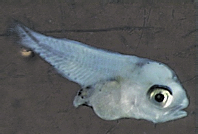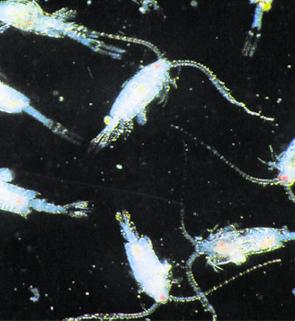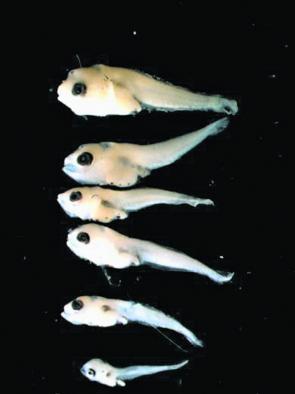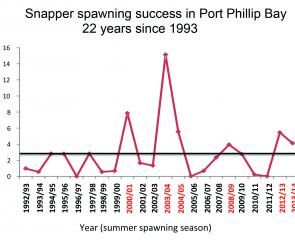Victoria’s western snapper stock is assessed as being one of the two most robust in Australia in the recently-released report, Status of Key Australian Fish Stocks 2012.
The report was commissioned by the Australian Government’s Fisheries Research and Development Corporation and prepared by the Australian Bureau of Agricultural and Resource Economics and Sciences (ABARES) in conjunction with government fishery research agencies around Australia.
A total of 13 biological stocks have been identified and assessed within the snapper’s range, from far north Queensland to Shark Bay, WA. Of these, only four were classified as currently being sustainably fished. Indications for these four stocks are that recruitment (i.e. spawning success) is currently sufficient to maintain healthy and productive fisheries and that the level of control over fishing pressure is appropriate.
Two of these ‘sustainable’ stocks support very small recreational fisheries in WA’s Shark Bay. The other two are the more substantial and productive South Australian Gulf St Vincent stock and Victoria’s western snapper stock, extending from Wilsons Promontory to the Murray River mouth, SA. From estimates in 2000/01 and 2006/07, a feature of the VIC’s western stock fishery is that recreational fishers take about 80% of the total catch by weight and an even higher share in terms of fish numbers.
By national standards, Victoria has excellent information on the western snapper stock and the fishery, particularly in Port Phillip Bay. This includes annual commercial fisheries data from 1914, recent recreational catch estimates, direct measures of spawning success each year and an increasingly detailed picture of what drives successful recruitment to the stock and the fishery.
Studies by DEPI’s Queenscliff researchers have shown that the bay is the major spawning area and recruitment source for this stock. Year-to-year variations in numbers of new juvenile (3-5 months old, 5-10cm long) snapper are linked mainly to the abundance of particular microscopic prey that the tiny snapper larvae (<20 days old, 3-10mm long) like to feed on during their first few weeks of life while still drifting up in the water column, and, to a lesser extent, water temperature during this period.
Annual trawl sampling of these small juvenile stages plus monitoring of 1 year old and older pinkies by Angler Diary volunteers now provide us with a strong predictive capability 2-3 years ahead of when each year-class reaches the 28cm entry point to the fishable part of the western Victorian stock, and 6-7 years ahead of when they enter the adult fishery (>40cm length).
Until now, what has been lacking is an estimate of the overall size of the western snapper stock, mainly because so much of the stock lies outside the bay in waters where there is comparatively little fishing pressure and associated data. However, recent advances in fish population modelling are overcoming this limitation, aided by the overall nature, length of time, and quality of information being collected for this stock.
One of two new Queenscliff-based projects titled Development of integrated assessment for western stock snapper aims to combine fishery and biological monitoring data in a model to provide estimates of stock size, more objective and quantitative measures of how the fishery is performing and forecasts of future stock and fishery conditions. It will also enable fishery managers to project how the snapper stock and fishery will respond to alternative management strategies – changed combinations of regulations and fishing pressure.
Closely linked to this is a two-part project aimed at developing a ‘harvest strategy’ and improved monitoring of recreational snapper catches. The harvest strategy is a framework to guide managers and fishers in their agreed responses to future changes in the stock abundance in order to keep the fishery performing at an acceptable level. With anglers taking 80% or more of the western stock snapper catch, improved estimates of the recreational catch are important for reliable stock and fishery estimates, performance monitoring and forecasting.
Typical of snapper stocks, Victoria’s western stock is largely maintained by occasional years of exceptionally high spawning success, such as occurred in 1998, 2001, 2004 and 2005. More recent annual recruitment has been poor to average but the previous stock build-up has carried the fishery on at a healthy productive level.
By 2012, recreational fishing catch rates in the bay stabilised after more than quadrupling since the low points in the mid 1990s and doubling in the past decade. Consistent with the recreational data, commercial fishery catch rates had also doubled during the 2000s.
In October 2013, DEPI researchers presented an update on the western snapper stock and related biological research. As previously predicted – and recently observed by anglers – overall catch rates have now begun to decline moderately from the mid/late-2000s highs as the result of recent poor to average recruitment. The effect of this on anglers’ satisfaction has been offset by the larger sizes of adult snapper being caught. Over the next 3-5 years, the decline should stabilise as the consecutive average recruitment events in 2008, 2009 and 2010 enter the adult fishery.
Encouragingly, the March 2013 survey showed the fourth strongest spawning success in the past 21 years and the more recent 2014 recruitment level was only slightly lower. From these results we can expect to see a clear increase in the number of pinkies entering the fishery in 2-3 years time, and an increase in adult numbers in 5-6 years time. In the mean time, snapper and whiting anglers can expect to be plagued by undersized pinkies over the next two years. This is the price to pay for a stock, which is in a stable, healthy and productive state and is being fished sustainably. So please take care returning these little snapper - they are the future of the fishery!
DEPI researchers’ based at Queenscliff are now approaching the end of a 3 year study of movement patterns of snapper within the bay and between the bay and coastal waters, using acoustic (i.e. electronic sound transmitter) tags. This study is being funded by recreational fishing license fees.
Since November 2011, around 160 snapper ranging in size from 25-90cm have been implanted with individually identifiable acoustic tags and released in Port Phillip Bay. Over 50 fixed-site plus boat-mounted listening stations around the bay and across the rip have enabled movements of each fish to be tracked, including exits and re-entries to the bay from Bass Strait.
Snapper detected leaving the bay, were almost all above 45 cm in length, with the smaller pinkies staying in the bay over winter. There was a high degree of consistency in movements observed over two full years. Snapper entered the bay in a single pulse from early September to mid-November, peaking in October. Snapper were detected leaving the bay over two discrete periods: from early December to early February, and in smaller numbers from mid-March through to May. From late May until September no tagged snapper were detected leaving or entering the bay.
The short turn-around between the end of arrivals and start of departures was interesting and the data, so far, suggest that many fish spend less than a month in the bay during the spring/summer spawning period. Pinkies moved onto inshore reefs during winter and were more commonly detected on artificial reefs further offshore during summer.
The degree of consistency extended down to individual fish. For example, several snapper were recorded leaving the bay within days of when they entered and left during the previous year. There were also interesting records of 60-70cm snapper that beat the odds by eluding capture while spending almost two months moving around the heavily-fished Carrum Bight area among many well known snapper marks, including the Recreational Fishing Reefs.
The study is now in its final stages – the analysis and synthesis of all this information will be available shortly. The large amount of movement data poses a real challenge in terms of how best to present the results to the angling community. While words may effectively describe the broad or consistent patterns of snapper movements and how these vary with size and between years, each fish has its own story to tell. The challenge is to come up with effective visual presentations to convey both the general movement patterns and the intriguing behaviours of individual fish. There is also a host of questions and theories to consider in relation to how movements relate to climate, water temperatures, moon state, tides, etc.
Other parts of the study include consideration of the diets of adult snapper and the nature of the seabed habitats where they spend large amounts of time. This will hopefully shed further light on feeding behaviour and habitat selection.
The snapper off eastern Victoria are part of the Australian East Coast stock that is undefined in terms of fishing sustainability, largely because parts of it are assessed separately off Queensland and NSW rather than as an entire stock.
While it is relatively lightly fished off Victoria, the stock is so heavily fished off the East Coast that fishing pressure must be reduced to avoid further decline (southern Queensland) and to improve the return from each fish caught (NSW). The available data across the three states suggest that around 70% of the catch is taken by recreational fishers.
Many Victorian anglers view SA’s Spencer Gulf snapper fishery as the benchmark or model for other Australian snapper fisheries. The prospect of catching numbers of 10kg+ fish attracts many of our anglers there on a regular basis and others for an once-in-a-lifetime experience. In fact, of the five snapper stocks identified in SA waters, the northern Spencer Gulf stock has declined from producing more than 50% of the SA catch to yielding around 20% in recent years.
Despite increasingly restrictive management controls on commercial and recreational fishing this stock is assessed as ‘depleting’, at least partly as the result of the lack of any substantial spawning success since 1999. It is unclear whether this has been caused by fishing pressure or unfavourable environmental conditions during the spawning season but fishing will continue to deplete the stock until recruitment improves. More than 90% of the catch is taken by the commercial fishery.
Much the same assessment applies to the southern Spencer Gulf stock. In contrast, the Gulf St Vincent stock has increased recently as a result of strong annual spawning success, lifting the healthy fishery there to unprecedented levels. There is insufficient information to assess the state of the snapper stocks off SA’s west coast and south coast.
The 2012 ABARES national snapper status report showed that in 2010 the total commercial snapper catch in Australia was over 1800 tonnes, including 91 tonnes from Port Phillip Bay and 5 tonnes from Victorian coastal waters. In Victoria the 70% reduction in commercial licences since 1987 coincided with a decline in commercial catches in Port Phillip Bay. DEPI has put a cap on the State licensed trawl catches of snapper in our coastal and offshore waters to limit growth in this area.
The most recent estimates of recreational catches from all mainland states was in 2001 and estimated a total recreational catch of 1334 tonnes, around 400 tonnes or 30% of which were taken in Victoria. Total recreational catches far exceed commercial catches in the East Coast and Victorian western stock fisheries; the reverse applies in the SA and WA fisheries. All states except Victoria monitor recreational charter fishing catches; with the most recent estimates for this sector, excluding Victoria, totalling 164 tonnes.
The status of key Australian fish stocks 2012 reports on the status of 150 identifiable stocks within 49 species representing the bulk of Australia’s marine fisheries, in terms of catch weight and value. It is available at www.fish.gov.au.
Facts
• Only two of Australia’s 13 recognised snapper stocks currently support substantial and sustainable fisheries – Victoria’s western stock, including Port Phillip Bay, is one of them.
• Average yearly spawning success is adequate to maintain the western stock and the Port Phillip Bay snapper fishery in a healthy and productive condition.
• Current controls on fishing pressure provide adequate protection to the stock.
• Anglers take about 80% (by weight) of the total catch from the western stock.
• Snapper off eastern Victoria are lightly fished but further north this East Coast stock is subject to excessive pressure with anglers taking about 70% of the catch.
Graph.
Annual snapper spawning success in Port Phillip Bay since 1993, compared to the long term average. Photo courtesy of Fisheries Victoria, DEPI.

A 6mm snapper larva 12 days after hatching. Photo courtesy of Fisheries Victoria, DEPI.

In the first days after hatching snapper larvae are particularly dependent on the availability of an early larval stage of these copepods. Photo courtesy of Fisheries Victoria, DEPI.

Snapper larvae spend up to 25 days in the water column, reaching 12mm in length, before settling to the bottom as tiny juveniles. Photo courtesy of Fisheries Victoria, DEPI.

By late autumn, at several weeks of age, juvenile snapper are widely distributed over sand and mud bottom, mainly in 10-18 m. Photo courtesy of Fisheries Victoria, DEPI.

Sustainably fished stocks of fish with a 30+ year life span can continue producing large fish even after some years of mediocre spawning success.





